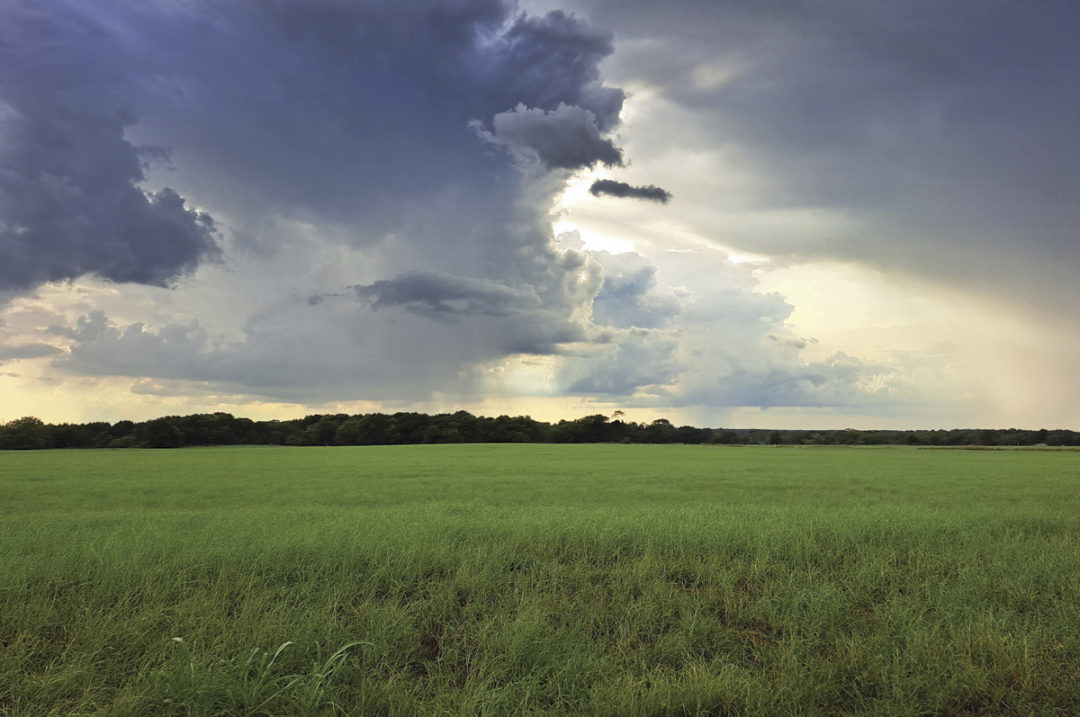Many southern U.S. regions once plagued by ongoing drought have seen substantial precipitation this past month. Although this rain is a welcome change, it occurred during a crucial harvest window for many small-grain crops – leaving many producers pondering the best means to handle these forages. Ideal management depends on the forage growth status. Feed that has already been chopped will need to be managed differently than forages still standing in the field.
In a recent conversation with Dr. John Goeser, Rock River Laboratory animal nutrition, research and innovation director, he outlined challenges and shared some practical management tips for dealing with forages in both aforementioned conditions.
Feed hygiene concerns
"One of the primary challenges with rain is that the moisture it adds to our forages acts much different than what occurs naturally in the forage,” says Goeser. "Although intracellular moisture levels may be ideal, the added extracellular moisture coming from precipitation makes the overall dry matter appear lower, creating harvest timing challenges.”
This extracellular moisture also increases bacterial and fungal growth, enhancing the risk for feed hygiene issues. These large rainfall events can also come with a risk for increased dirt contamination. This risk is multifaceted; rain splashing increases the amount of soil on the plant standing in the field, bunkers with a gravel or dirt pad become wet and can contaminate the pile, and tractors moving around the fields and farm can carry additional dirt into these piles.
“Regardless of the source, we often see ash levels increasing with large rainfall events,” Goeser says. “This high ash can be troubling for an ideal fermentation, and in high-moisture forages, increase the risk for clostridial fermentation and enterobacteriaceae contamination of feed.”
Cut forage lying in the field
Forage that has been cut and is lying in the field during rain events is a particularly challenging situation for a variety of reasons. As Goeser points out, sugars are an essential part of forage fermentation. Without sugar, the bacteria essential for good fermentation and silage stabilization have no substrate to grow or reproduce, making fermentation impossible. This allows bad bacteria and organisms to take hold and causes further degradation of the feed.
Forages that have been laying for more than 48 hours likely have minimal sugars left to allow for fermentation, as sugars are utilized by the plant even after forages are chopped. This leaves two options for forages sustaining rainfall after cutting.
“One option is to try and let this forage dry out and harvest for dry hay,” Goeser explains. “This carries some risk, as the longer it takes to dry this forage out the more likelihood of further deterioration of the crop and mold and yeast growth.”
The other option is to harvest the forage when field/forage conditions allow and put it into a separate pile from forages previously harvested. As mentioned, this forage likely has little fermentation potential, limiting its long-term storage potential. As such, prioritize quickly feeding out this forage. Quality can be highly variable, so Goeser also recommends testing to understand how to best feed this forage. If more rain is expected, covering the pile can help prevent further extracellular moisture and headaches.
Forage still standing
But what’s the best strategy for handling forages that are still standing in the field? While it can be tempting to rush in to avoid further mature and lignified forages, Goeser strongly recommends considering the risk of increased soil compaction in harvesting fields that are too wet. He advises working with an agronomist to determine when fields are ready to support the harvest equipment weight without damaging soil structure.
“There is also pressure to get these spring crops out of the field to make sure we have enough time for corn silage growth; however, additional soil compaction associated with working wet fields can limit the following crop’s ability to get a proper start,” Goeser highlights. “Keeping our soils in mind as we look to harvest standing crops will ultimately help to protect these summer crops.”
Opting for a short-day corn silage variety may be worth considering, if available. When harvesting forage, it’s even increasingly crucial to ensure all criteria are met to promote proper and efficient fermentation. For mature forages with lower intracellular moisture levels, ideal packing can prove particularly challenging; however, Goeser reiterates that taking steps to ensure it’s done correctly will allow the forage to ferment properly. Using an inoculant will allow the forage to ferment quickly and effectively, minimizing the growth of undesirable organisms.
Forage inventories remain tight for many of the areas receiving these extreme rainfall events, so sacrificing forage isn’t an option. Much of this forage can still be utilized when managed properly. This rain has restored subsoil moisture levels, helping corn and sorghum crops get a good start. As areas of the Midwest start to fall into drought status, optimizing local crops will help minimize the potentially nationwide impacts of drought.





